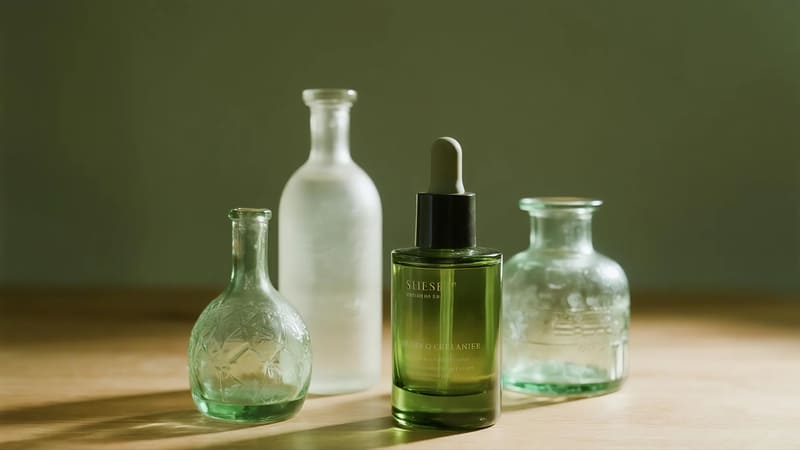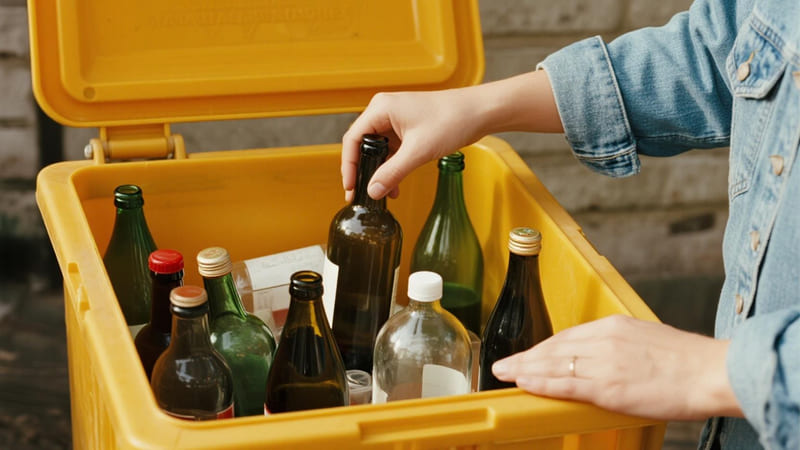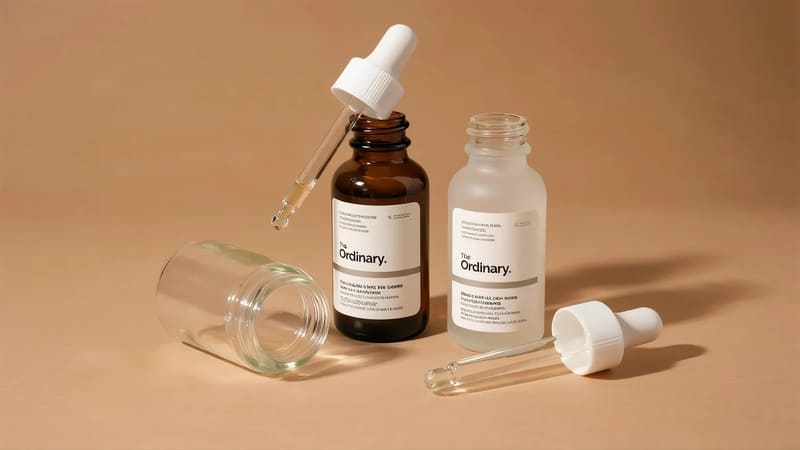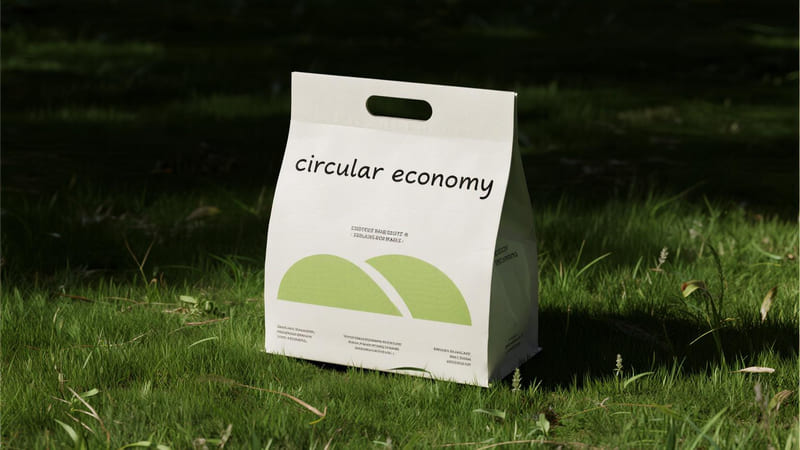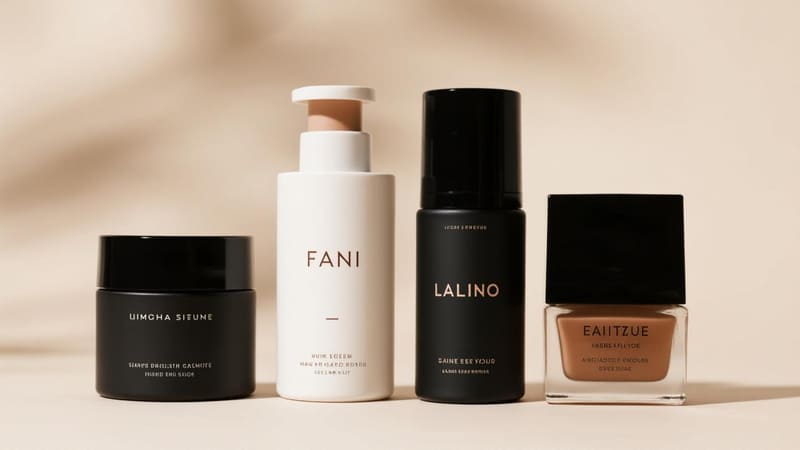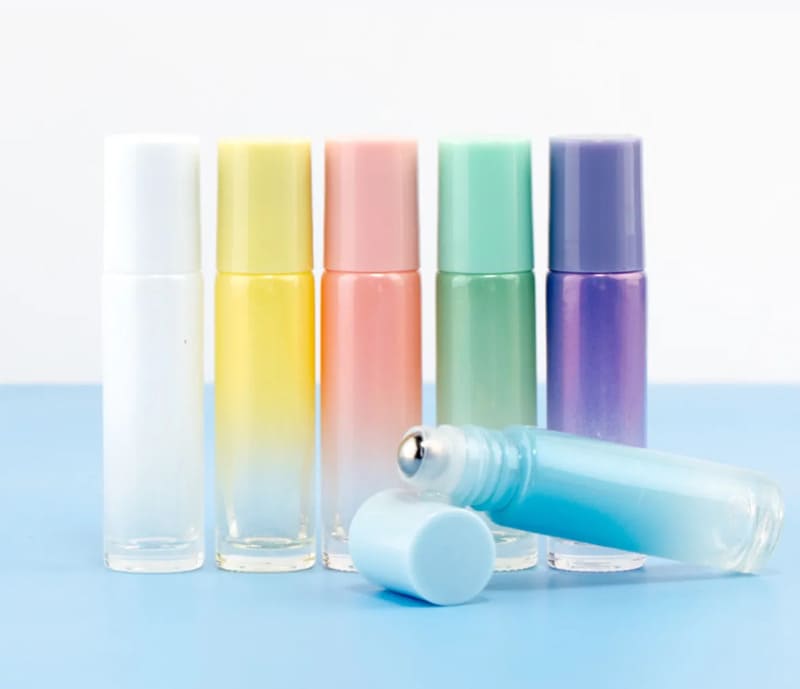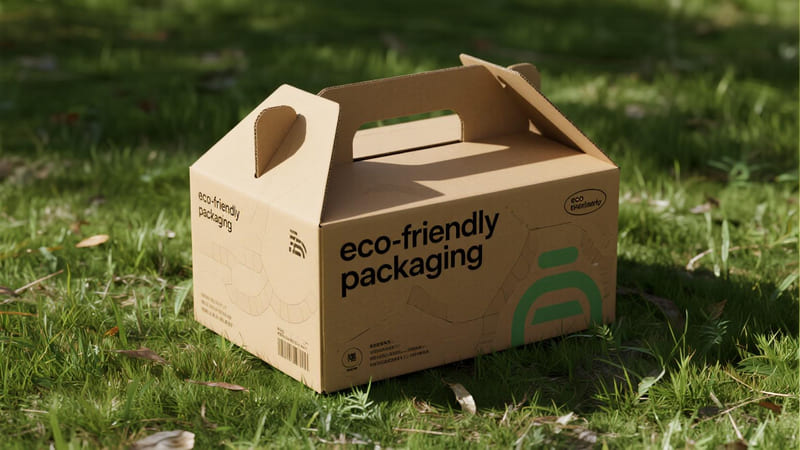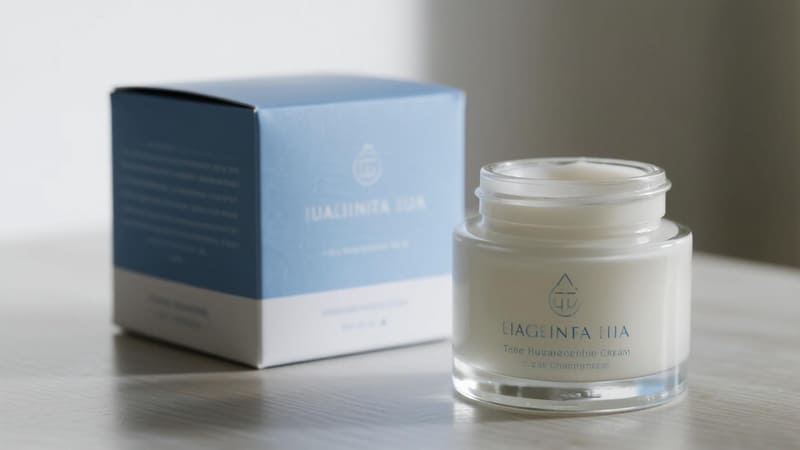Once you’ve enjoyed the last drop of your favorite serum or toner, you’re often left with a high-quality glass bottle. Tossing such a well-made item can feel wasteful, and thankfully, there are many responsible and creative things you can do with them instead.
Glass skincare bottles should first be thoroughly cleaned. Then, they can be recycled through most curbside programs, repurposed into items like bud vases or travel containers, returned to the brand if they have a take-back program, or refilled with other products. Their durability and inertness make them ideal for a second life.
Glass is one of the most sustainable packaging materials due to its high recyclability. As a packaging manufacturer with ShineTop, we produce countless glass bottles for cosmetic brands, and we always encourage consumers to give them a new purpose. Let’s explore the best options for your empty glass skincare bottles.
What to Do with Old Skincare Glass Bottles?
Those empty glass dropper bottles, serum pumps, and toner containers have significant potential beyond their first use. Your options generally fall into three main categories: recycling, repurposing, or returning.
With old skincare glass bottles, the best options are to: 1. Recycle them properly after cleaning and separating components. 2. Repurpose them for home use, such as for propagating plants, storing other liquids, or as decorative items. 3. Return them to the brand or a specialized recycling program if one is available.
Choosing any of these options is far better than sending them to a landfill.
Your Top Options:
-
Recycle (The Standard Eco-Friendly Choice):
- How:
- Clean Thoroughly: Rinse the bottle with hot, soapy water to remove all product residue.
- Separate Components: This is crucial. Remove the pump, dropper, or cap. The glass bottle itself is widely recyclable. The other components are often mixed materials (plastic, metal springs, rubber bulbs) and usually need to be discarded or sent to a specialized program like TerraCycle.
- Check Local Rules: Place the clean glass bottle in your curbside recycling bin according to your local municipality’s guidelines. Most accept clear and colored glass.
- Why: Glass is infinitely recyclable without loss of quality, saving significant energy and raw materials compared to making new glass.
- How:
-
Repurpose & Upcycle (The Creative Choice):
- Bud Vases: Dropper bottles and serum bottles are perfect for holding single small flower stems or tiny bouquets.
- Plant Propagation Stations: Fill with water and use them to propagate small plant cuttings (like pothos or philodendron). A lineup of them on a windowsill looks beautiful.
- Travel Containers: Clean them well and refill with other serums, facial oils, or even hand sanitizer for travel.
- DIY Room Sprays or Reed Diffusers: For larger toner bottles, you can create your own room spray or add diffuser oil and reeds.
- Storing Other Liquids: Use for storing homemade infused oils (for cooking or beauty), simple syrups for coffee, or even ink for calligraphy.
- Craft Organizers: Store small beads, glitter, or other tiny craft supplies.
-
Return & Specialized Recycling (The Brand-Supported Choice):
- Brand Take-Back Programs: Some beauty brands (like Kiehl’s, L’Occitane, etc.) have programs where you can return empty containers to their stores, often for a reward. Check your favorite brand’s website.
- TerraCycle & Pact Collective: These organizations partner with many beauty brands to offer free mail-in or drop-off recycling programs for hard-to-recycle beauty packaging, including complex components like pumps and droppers.
What Should I Do with My Glass Bottles?
This question applies to all glass bottles, not just those from skincare. The principles of responsible disposal and reuse are the same, with recycling being the most common and impactful action for most households.
The best thing to do with your empty glass bottles (from food, beverages, skincare, etc.) is to recycle them. Ensure they are empty and rinsed clean, then place them in your designated curbside recycling bin. For bottles with unique shapes or colors, consider repurposing them for home décor, storage, or craft projects.
Recycling glass is a simple yet powerful environmental action.
The Glass Bottle Lifecycle – Your Role:
- Empty & Rinse: Make sure the bottle is empty of its original contents. Give it a quick rinse with water to remove residue. This prevents contamination in the recycling stream and odors in your bin.
- Remove Lids/Caps (Usually): Most recycling programs prefer that you remove metal or plastic caps before recycling the glass bottle. Metal caps can often be recycled separately. Plastic caps may or may not be recyclable depending on their size and plastic type – check local rules.
- Recycle: Place the clean glass bottle in your recycling bin. There’s usually no need to remove paper labels, as they are burned off during the recycling process.
- Repurpose (Optional): If a bottle is particularly beautiful, consider upcycling it:
- Wine/Beverage Bottles: Can be used as water carafes, candle holders, or filled with fairy lights for decoration.
- Food Jars (e.g., from sauces, pickles): Excellent for pantry storage of dry goods, for meal prepping salads, or as drinking glasses.
- Skincare Bottles: As mentioned, great for bud vases, propagation, or travel containers.
Why Recycling Glass is So Important:
- Saves Energy: Making glass from recycled materials uses about 40% less energy than making it from virgin raw materials.
- Conserves Raw Materials: Reduces the need to quarry sand, soda ash, and limestone.
- Reduces Waste: Diverts a heavy, non-biodegradable material from landfills.
- Lowers Emissions: Reduces greenhouse gas emissions associated with production.
What to Do with The Ordinary Glass Bottles?
The Ordinary, a brand known for its effective, science-backed formulations, primarily uses glass dropper bottles for its popular serums. These bottles are excellent candidates for recycling and repurposing.
The Ordinary’s glass bottles are highly suitable for recycling. After thoroughly cleaning the bottle, separate the glass pipette from the rubber bulb and plastic collar of the dropper. The glass bottle and the glass pipette can be placed in your glass recycling. The other components (rubber bulb, plastic collar) should generally be discarded or sent to a specialized recycling program like TerraCycle.
Here’s the best practice for dealing with these specific bottles:
-
Clean the Bottle & Dropper:
- Rinse the bottle well with hot, soapy water.
- Squeeze the dropper bulb several times in hot, soapy water to clean the inside of the glass pipette, then rinse with clean water. Let everything air dry completely.
-
Disassemble the Dropper:
- The dropper top consists of three parts: the plastic screw collar, the rubber/silicone bulb, and the glass pipette.
- Gently pull the glass pipette out from the collar/bulb assembly.
- You can often pull the rubber bulb out of the plastic collar as well.
-
Sort for Disposal:
- Glass Bottle: Recyclable. Place in your glass recycling bin.
- Glass Pipette: Recyclable. Place with your glass recycling.
- Plastic Collar: Check for a recycling number. If it has one and your local program accepts that type of plastic (and it’s not too small), you can recycle it. Otherwise, it should be discarded.
- Rubber/Silicone Bulb: This is generally not recyclable in curbside programs and should be discarded in the general waste.
-
Repurpose:
- These 30ml dropper bottles are perfect for repurposing!
- Travel: Fill with another facial oil, serum, or even a liquid foundation.
- DIY Beauty: Create your own facial oil blends.
- Crafts: Use them to hold and dispense ink, thin paints, or glue.
- Plant Propagation: Ideal for starting small plant cuttings.
By taking a moment to disassemble the components, you can ensure the glass parts are properly recycled, maximizing the sustainability of the packaging.
How to Disinfect Glass Bottles for Skincare?
If you plan to reuse your glass skincare bottles for other homemade skincare preparations, proper disinfection is crucial to prevent bacterial growth and ensure the safety of your new product.
To disinfect glass bottles for skincare: 1. Wash thoroughly with hot, soapy water and rinse well. 2. Submerge the glass bottles and glass pipettes in a pot of boiling water for at least 10 minutes. 3. Alternatively, wash and then spray or rinse thoroughly with 70% isopropyl alcohol, letting them air dry completely on a clean paper towel. Ensure no water or alcohol remains before refilling.
Choose the method that works best for you. Always work on a clean surface.
Method 1: Boiling Water (Heat Sterilization)
This is a very effective method for heat-safe glass.
- Wash First: Clean the glass bottle and glass pipette thoroughly with hot water and soap to remove all product residue. Rinse completely.
- Prepare for Boiling: Place the clean glass parts in a large pot. You can place a small cloth at the bottom to prevent the glass from rattling and potentially cracking.
- Cover with Water: Fill the pot with enough cold or room temperature water to completely cover the glass parts. Starting with cold water helps prevent thermal shock.
- Boil: Bring the water to a rolling boil.
- Sterilize: Let the glass boil for at least 10 minutes.
- Cool & Dry: Carefully turn off the heat. You can let the glass cool down in the water or use clean tongs to carefully remove the hot items and place them upside down on a clean paper towel to air dry completely. Ensure no moisture is left inside before you refill them.
Note: Do not boil plastic or rubber components like dropper bulbs, as they will likely melt or degrade.
Method 2: Isopropyl Alcohol (Chemical Disinfection)
This method is faster and suitable for when boiling isn’t practical.
- Wash First: As above, clean the glass bottle and pipette thoroughly with hot, soapy water and rinse well. Let them dry.
- Prepare Alcohol: Use 70% isopropyl alcohol (rubbing alcohol). A 70% solution is actually more effective at killing bacteria than 99% because the water content helps it penetrate cell walls.
- Disinfect:
- You can pour a small amount of the 70% alcohol into the bottle, screw on a temporary cap, and shake well to coat all surfaces.
- Alternatively, use a spray bottle to thoroughly spray the inside and outside of the glass bottle and the glass pipette.
- Air Dry: Pour out any excess alcohol and place the items on a clean paper towel to air dry completely. The alcohol will evaporate, leaving a disinfected surface. Do not rinse after the alcohol step.
Disinfecting Caps & Dropper Bulbs:
- Plastic caps and rubber/silicone dropper bulbs cannot be boiled.
- Wash them thoroughly with hot, soapy water, then spray them with 70% isopropyl alcohol and let them air dry completely.
By following these steps, you can safely and effectively prepare your old glass skincare bottles for a new life holding your own DIY creations.
Conclusion
Glass skincare bottles are valuable resources that shouldn’t end up in a landfill. The best course of action is to recycle them responsibly by cleaning them and separating their components. Even better, their durability and beauty make them perfect for a wide range of creative repurposing projects, from home décor to DIY beauty. By properly disinfecting them, you can safely give these elegant bottles a second life, contributing to a more sustainable and creative lifestyle.

